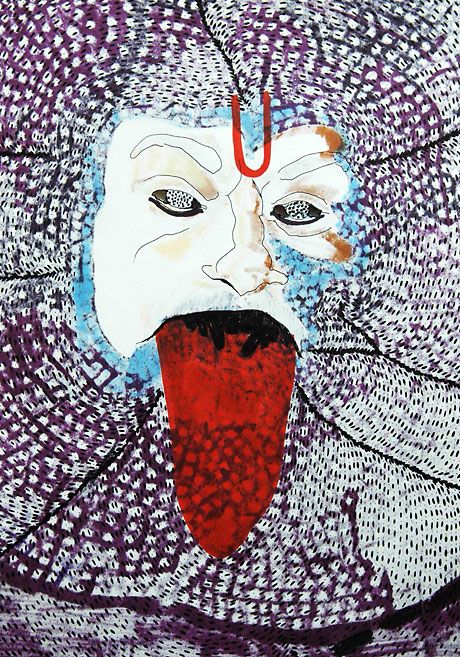
The Orient
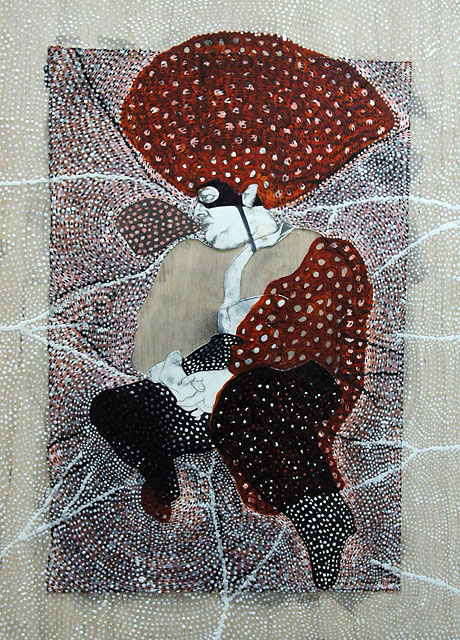
An Other from an Other Mother
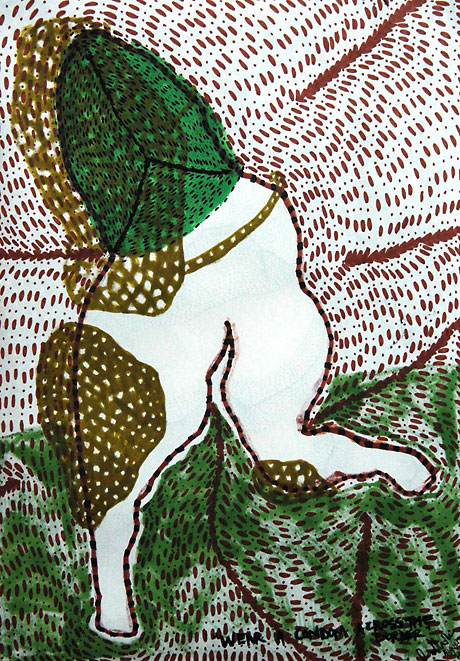
Across the Border
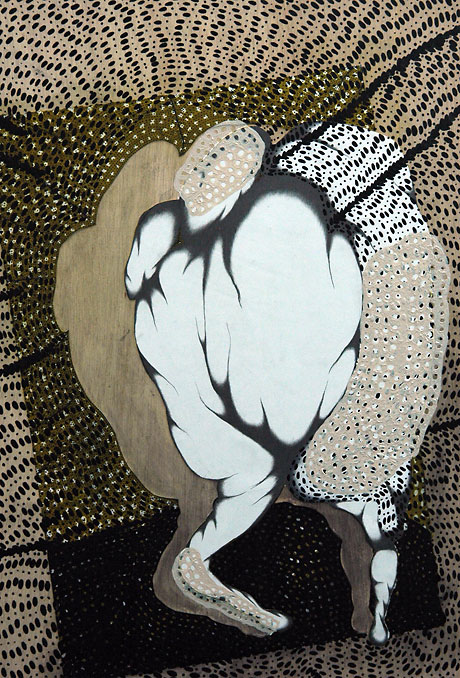
When I See
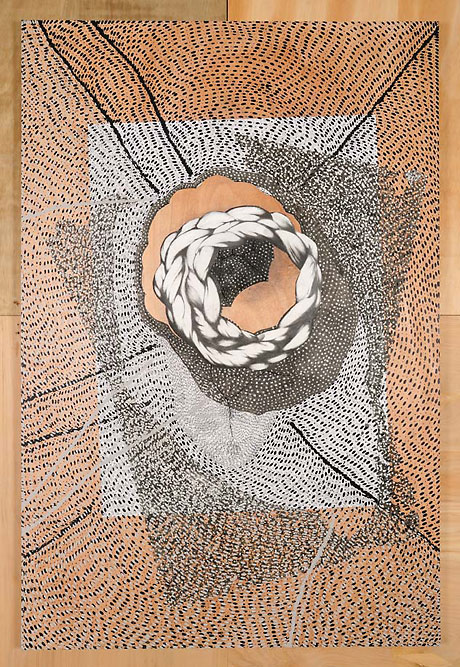
Shifter
Orientalism, Globalisation and Commoditization: The Artwork of Radhika Khimji
October 2009
Curator Aisha Stoby reviews the work of Omani artist Radhika Khimji, based on discussions between her and the artist.
One of the most internationally recognized artists to come out of Oman, Radhika Khimji was born and raised in Muscat where she received her early education. She continued her studies at several institutions in the UK, including the Slade School of Art and the Royal Academy. She has since exhibited extensively throughout Europe, India, and the Middle East.
In a world which has become increasingly nationally ambiguous and more rapidly in flux than ever before, many of Khimji’s pieces deal with themes of contemporary Orientalism and globalisation. Themes that approach the “Orient” violently prevail within her pieces, and are often chosen by Khimji as a reaction to her work being exhibited as the regional novelty of an exotic non-Western artist, thereby making it a marketable commodity. As a result, its deeper conceptual value runs the risk of escaping critical attention. She often wonders what type of platform viewers perceive her work to be standing on, and the nature of the education from which it derives. Khimji’s concern about the manner in which her work is portrayed has led her to forge a kind of rebellion, through its aesthetic and conceptual nature, against such a noxious, consumption-driven approach.
As a “Middle Eastern” artist belonging to a globalised society, the struggle of defining identity without being classified as an Oriental commodity sets the tone of her artistic production. Khimji relates the notion of Edward Said’s statement of the “Orient” becoming “Oriental” simply because it could, to the “Orient” within that context being responsible for the commoditization of culture. She perceives the modernization of countries like Oman and other nations in the Gulf region occurring at such a rapid speed that their respective past histories are in danger of becoming lost and fragmented.
In Khimji’s series in response to the Orient, she unleashes her angst towards shows exploiting Omani artists to a Western audience in a patronizing manner that portray them as the unknown “other” having no say whatsoever regarding their own representation and demonstrates her dismay towards the ignorance exhibited towards the Gulf on a generic level due to its comparatively extensive media coverage in the West. The title of the piece is inspired by Isa Genzken’s installation on the Bauhaus, which alluded to Genzken’s distaste of the popularisation and consistent referencing of the Bauhaus.
Similar themes resonate in the work “An Other from Another Mother”. The piece pertains to the amount of times the term “other” can be deployed in a title, alluding to the “other “ and the establishment of “difference”. “An Other from Another Mother” recreates this element of dehumanizing alienation, hence the post-colonial usage of the term “other” via Edward Said’s approach to its semantic utilization, which assisted Khimji in perceiving the potential of the “Oriental” being commoditized, therefore transforming culture into currency. The work seeks to bring this appreciation to the forefront in order to shed light upon the issue and to stimulate further debate about it.
Juxtaposing commoditisation to cultural identity, “When I see the Word Culture I take out my Checquebook” was initially provoked from Fritz Lang’s exclamation in Goddard’s film “Le Mepris”. Khimji does not appropriate the term “Culture” within a personalised Omani context, but applies it in a general sense, implying not only the gaze in which various identities should be seen through, but also commenting on ownership and what/whom is responsible for both labelling and constructing such identities, and the extent in which the individuals representative of an identity should control its definitive constituents.
In 2008, Radhika finished a series addressing issues surrounding trans-national migration, dealing with the “necessitated” protective measures in crossing borders. Khimji is both amused and chagrined by people’s misconceptions of the complexity of border crossing in the context of globalisation. She poses the inquiry, “Is it easy to cross a border?” She observes that commodities generally tend to travel without the expectation that the transported goods will impose a threat, such as explosives, but juxtaposes that to emigration laws in the UK regarding the transportation of people. Artists from the Middle East experience great difficulty in obtaining visas to visit the UK, especially when travelling to preview an exhibition containing their work. The stereotypical concerns arise as to whether the purpose of their journey is legitimate or, indeed, whether the artists themselves are “terrorists”.
Khimji’s unique aesthetic consistently retains a succinct conceptual value relevant to the essence of her work and her overall artistic idiom. Her deformed figural contours ultimately signify censorship and mutiny through attempting to define “speech” and “context”, while remaining mute as illustrated through their faceless, anamorphic depictions. Her compositions defy both painting and sculpture, for these two mediums become merged in the compositions. This element of undetermined categorization of medium lends itself to the depiction of the figures, who are attempting to define their own categorization through concealing their precise identity. The figures appearance and demeanour raise the issue of how to place them in a direct public context. This aspect becomes more relevant to censorship for some of the beings appear quite sexualized to the extent that their anthropomorphic counterparts would be deemed as obscene in certain societies within a public space.
Khimji has contrived a language that permits her to communicate whatever she pleases, without anyone being aware of, or detecting exactly what, is expressed or being uttered. Though her “language” envelops her work with a tinge of mystery, the artist has no wish to mystify her subjects, yet allows this sense of ambiguity to act as her agency for placing her work within the moment, without inhibiting its application to other contexts.
Radhika Khimji will be showing in New York at Bose Pacia from November 12th.